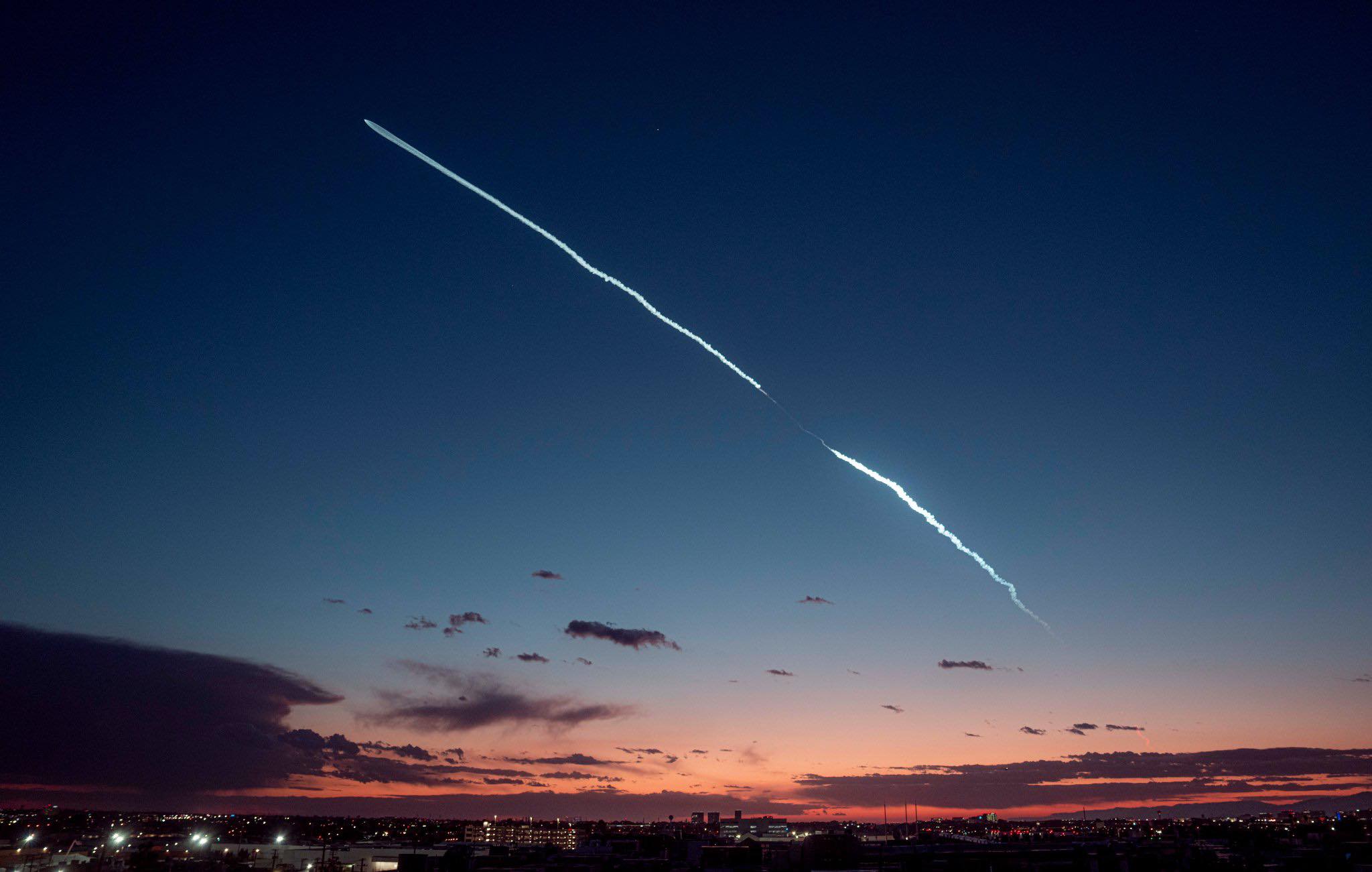
SpaceX has successfully undertaken its seventh Falcon 9 mission of March and its tenth flight of the year out of Vandenberg Space Force Base, Calif., following Monday’s 7:28 p.m. PDT launch of a ten-times-used booster out of the mountain-ringed West Coast site. Veteran B1075—which entered service 14 months ago and becomes the 14th Falcon 9 core since May 2021 to launch ten times—took flight from Space Launch Complex (SLC)-4E, laden with 22 Starlink internet communications satellites destined for low-Earth orbit.
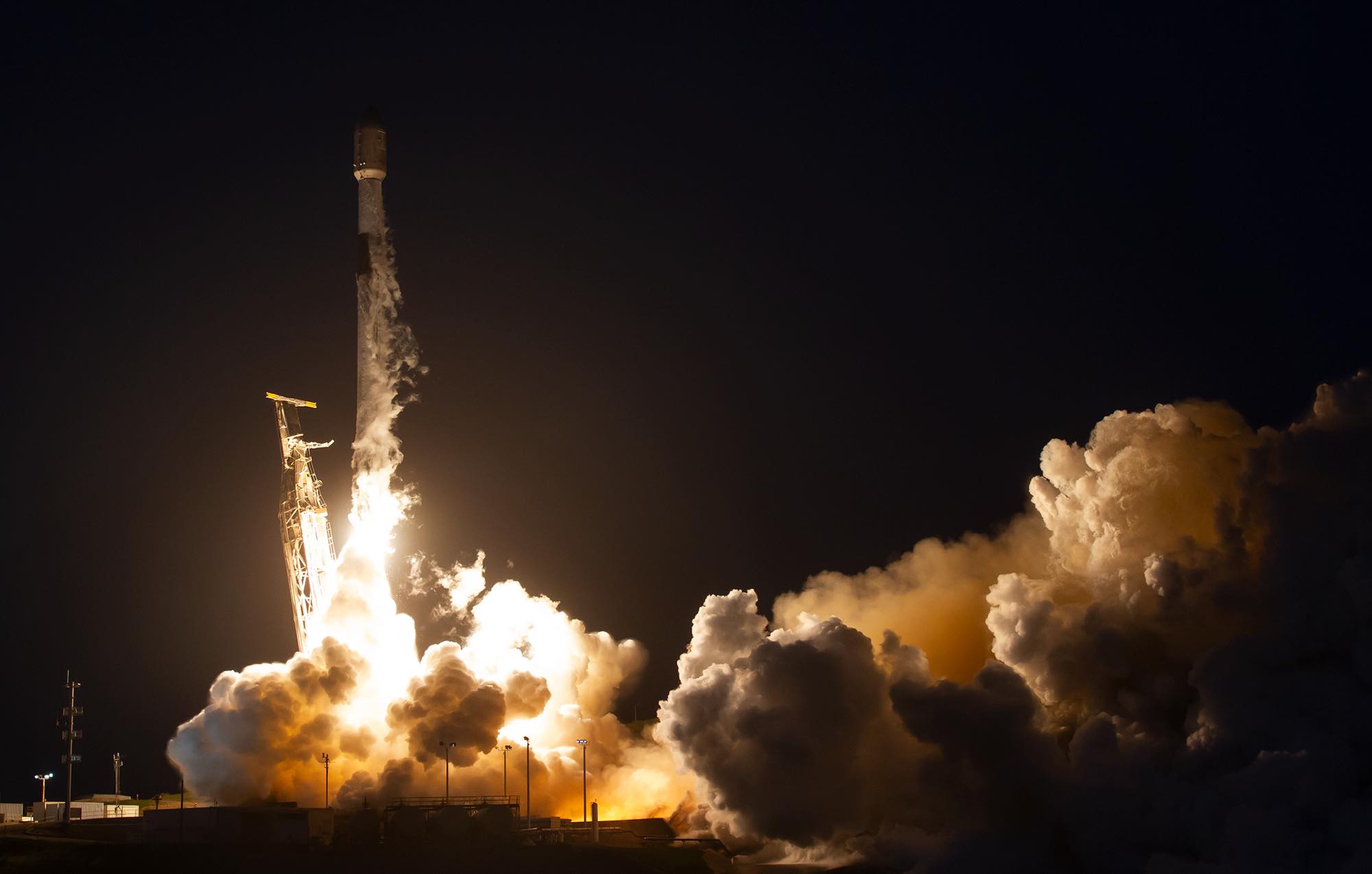
Monday evening’s mission came on the coattails of a busy first half of March, which opened with a trio of back-to-back launches spread over a 20-hour period on the 4th—including two flights a record-setting two hours apart—from Vandenberg and Florida’s Cape Canaveral Space Force Station the Kennedy Space Center (KSC). Four additional Falcon 9 missions have now flown in the last nine days, together with last Wednesday’s third Integrated Flight Test (IFT-3) of the Starship/Super Heavy stack out of Boca Chica, Texas, which saw the 164-foot-long (50-meter) Starship reach space and achieve orbital velocity before disintegrating during re-entry.
Those March missions have to date delivered more than a hundred Starlinks, the 53-payload Transporter-10 “rideshare” stack and Dragon Endeavour with her Crew-8 complement of NASA astronauts Matt Dominick, Mike Barratt and Jeanette Epps, together with Russia’s Aleksandr Grebenkin, on the first leg of their journey to the International Space Station (ISS). Among their number have been seen the 25th Falcon 9 flight inside 2024’s 11th week and the third booster to launch and return from a life-leading 19th mission.
Flying last night was B1075, which began her Vandenberg duties in January of last year and went on to fly eight times in 2023, achieving turnaround times as short as only five weeks between missions, and so far twice in 2024. She has lifted over 200 Starlinks on eight of her ten flights, as well as a pair of “reflector” satellite in support of Germany’s SARah radar-imaging surveillance constellation and the inaugural Tranche 0 Transport and Tracking Layer (TTL) mission for the Space Development Agency (SDA).
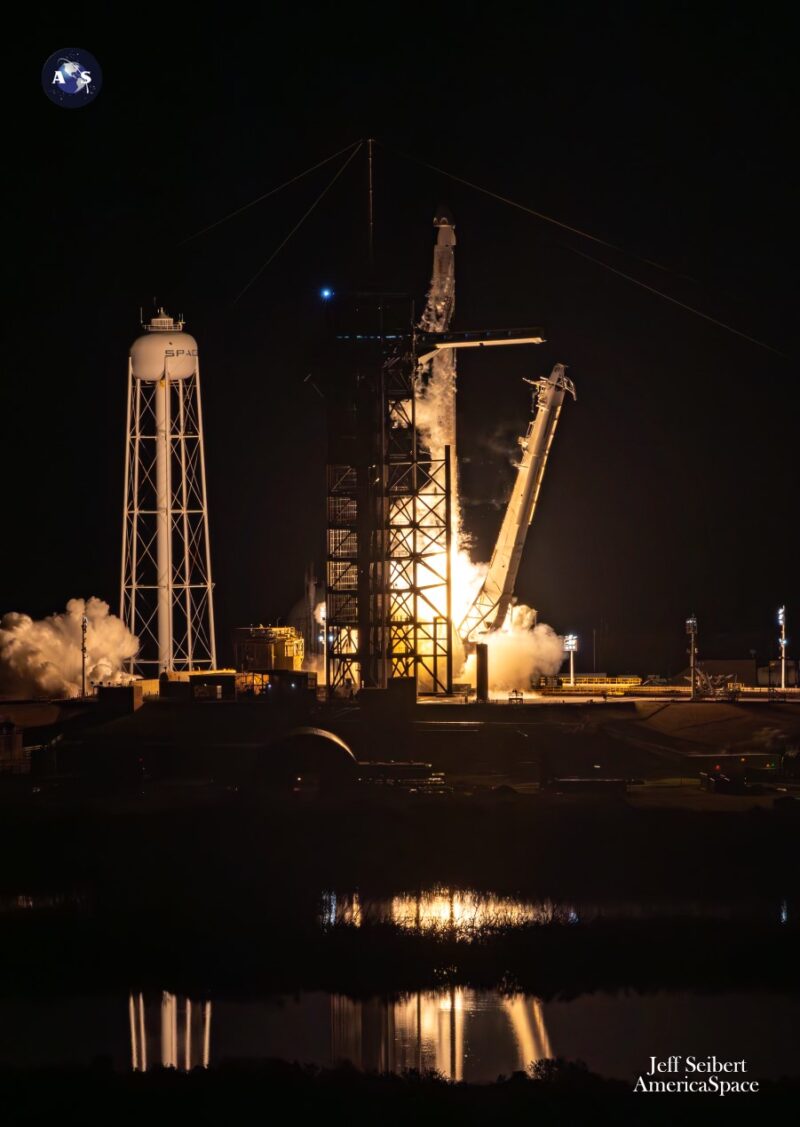
Last night’s launch was also the tenth of the year out of Vandenberg and the 70th overall since SpaceX began Falcon 9 operations on the West Coast back in September 2013. Across more than a decade of active service, no less than 16 Falcon 9 cores—including a brand-new booster that came online earlier this year—have risen from Vandenberg, whose flight cadence has grown rapidly from a single launch in 2013 to five annual launches by 2017, six in 2018, 13 by the close of 2022 and 28 at the end of last year.
Thirty-nine missions since September 2021 put nearly 1,400 Starlinks into orbit while a further nine between January 2017 and last May delivered dozens of Iridium NEXT global mobile communications satellites into space. Added to that list are four Transporter stacks, six Earth observation, radar-imaging and ocean altimetry satellites, two pairs of classified missions for the National Reconnaissance Office (NRO) and Space Development Agency (SDA) and NASA’s Double Asteroid Redirection Test (DART) to investigate the asteroid Didymos and impact its tiny companion, Dimorphos.
Benefiting from 80-percent-favorable weather, B1075 sprang from SLC-4E at 7:28 p.m. PDT and roared into the Vandenberg darkness, the glow of her nine Merlin 1D+ engines clearly visible and her growl of more than 1.5 million pounds (680,000 kilograms) of thrust doubtless unsettling many uninitiated visitors to the West Coast. Two-and-a-half minutes after liftoff, the core was jettisoned to commence a controlled descent and pinpoint touchdown on the deck of the Autonomous Spaceport Drone Ship (ASDS), “Of Course I Still Love You”, situated offshore in the Pacific Ocean.
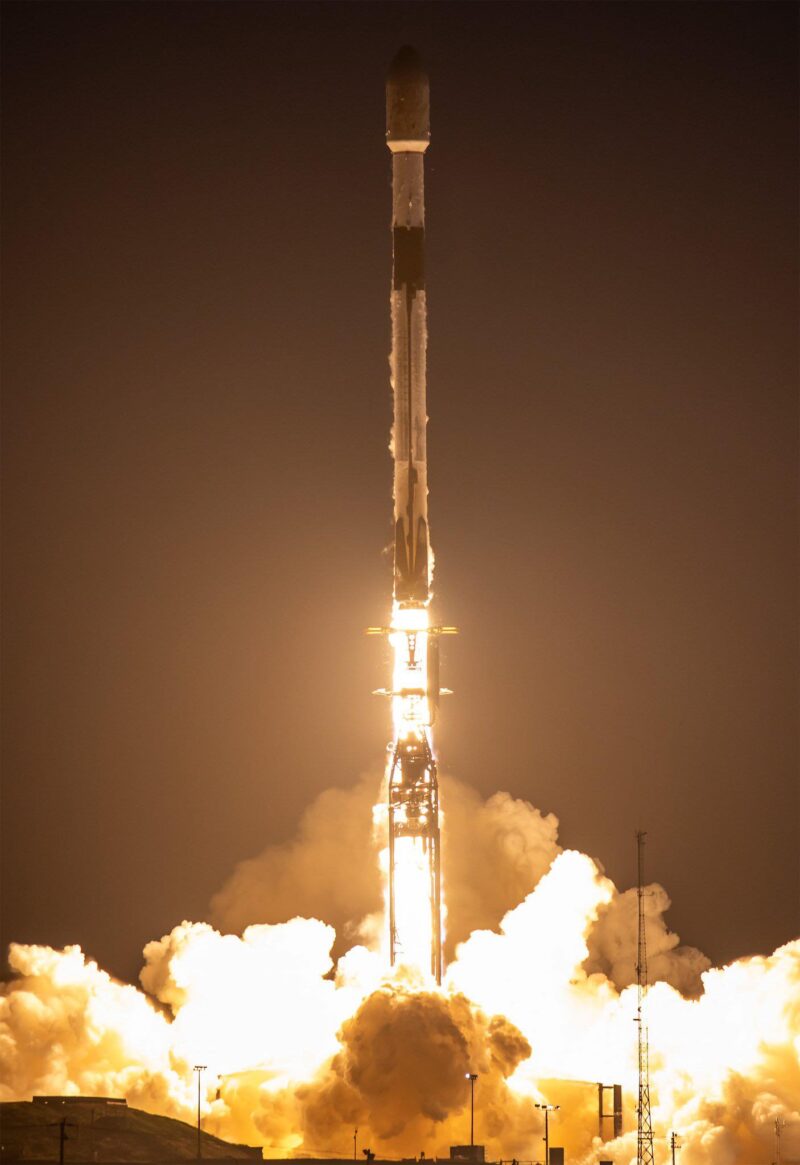
Meanwhile, the second stage’s single Merlin 1D+ Vacuum engine conducted a customary six-minute “burn” to boost the 22 Starlinks to the proper position for deployment a little more than an hour into the flight. Their successful insertion into orbit brings to more than 380 the total number of these flat-packed satellites launched so far in 2024.
As a network, Starlink enables high-speed and low-latency internet provision to over 70 sovereign nations and international markets in North and South America, Europe, Asia, Oceania and Africa. Landlocked Eswatini—formerly Swaziland—in southern Africa and Honduras and Paraguay joined Starlink in December and SpaceX revealed that network availability was extended to Mongolia in March 2024.
The downsized V2 Mini satellites, first flown in February of last year, boast three to four times greater “usable” bandwidth than earlier Starlink iterations. “V2 Minis include key technologies—such as more powerful phased-array antennas and the use of E-Band for backhaul—which will allow Starlink to provide 4x more capacity per satellite than earlier iterations,” SpaceX explained. “Among other enhancements, V2 Minis are equipped with new argon Hall thrusters for on-orbit maneuvering.”
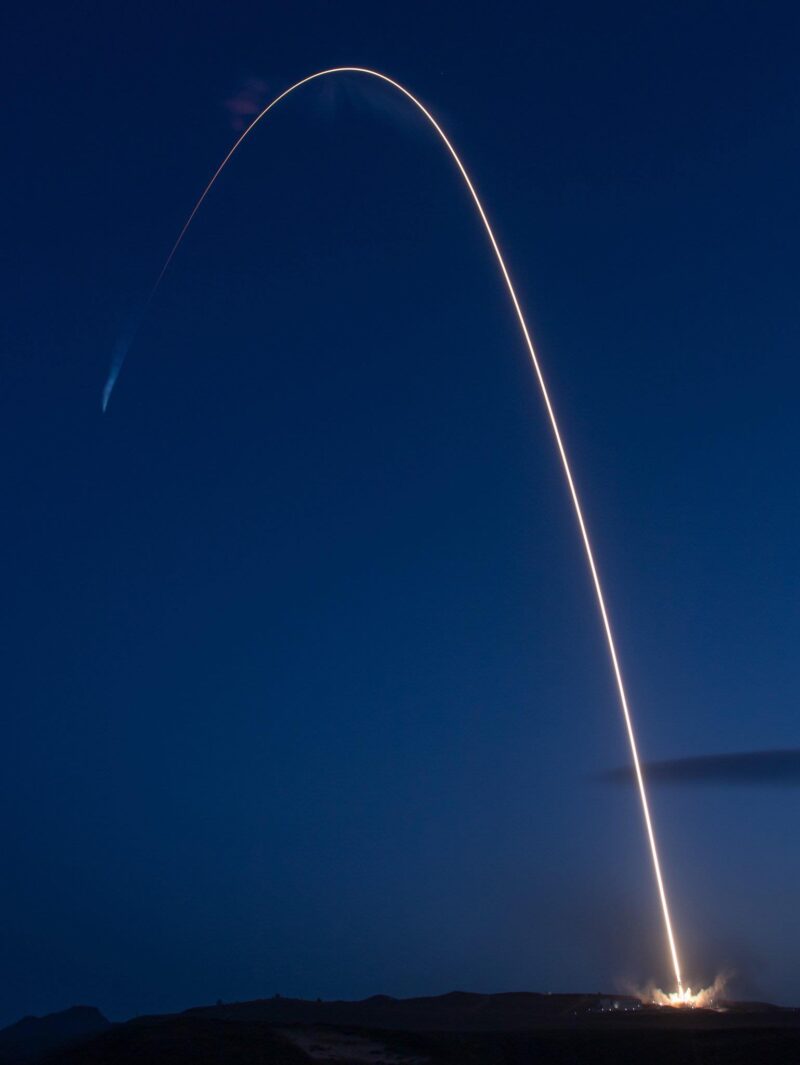
Florida-based intercity operator Brightline adopted Starlink on its trains in 2023, the first passenger rail service in the world to do so. Additionally, El Salvador’s Ministry of Education has begun integrating Starlink capability into its schools to help close the digital divide between urban and remote rural communities and 50 Rwandan schools are now connected via Starlink’s high-speed internet service.
And in January, SpaceX lofted its first six “Direct-to-Cell” Starlinks, which permit mobile network providers to offer “seamless global access to texting, calling and browsing”, whether “on land, lakes or coastal waters”, without the need to change hardware or firmware. Within six days of that first launch, SpaceX engineers sent and received their first text messages via Direct-to-Cell and as of March Starlink reportedly has about 2.6 million registered subscribers or customers worldwide.

Attention now turns to storied Space Launch Complex (SLC)-40 at Cape Canaveral Space Force Station, Fla., where SpaceX plans to launch its 30th Commercial Resupply Services (CRS-30) Cargo Dragon mission to the ISS at 4:55 p.m. EDT Thursday. Laden with a multitude of payloads, equipment and supplies for the incumbent Expedition 70 and upcoming Expedition 71 increments, Crew Dragon will spend about 38.5 hours and 24 orbits in independent flight, before docking autonomously at the space-facing (or “zenith”) port of the station’s Harmony node about 7:30 a.m. EDT Saturday.
Expedition 70 astronauts Loral O’Hara and Mike Barratt were busy undergoing training last week to monitor CRS-30’s approach and docking profile, ready to step in and execute corrective actions if necessary. After docking, Crew Dragon will remain attached to the ISS for about a month in support of an expansive plate of research that includes an experiment to explore the carbon dioxide capture mechanisms of two types of grasses to better understand changes in photosynthesis and plant metabolism in space, a multi-resolution scanner for the station’s on-board Astrobee robotic “helper” to support automated three-dimensional sensing, mapping and situational awareness functions and a deployable CubeSat to measure oceanic ice thickness and levels.




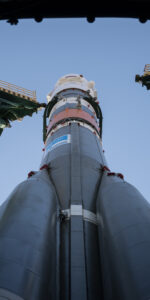

One Comment
Leave a ReplyOne Ping
Pingback:SpaceX Launches Tenth Vandenberg Flight for CRS-30 - Space Holics